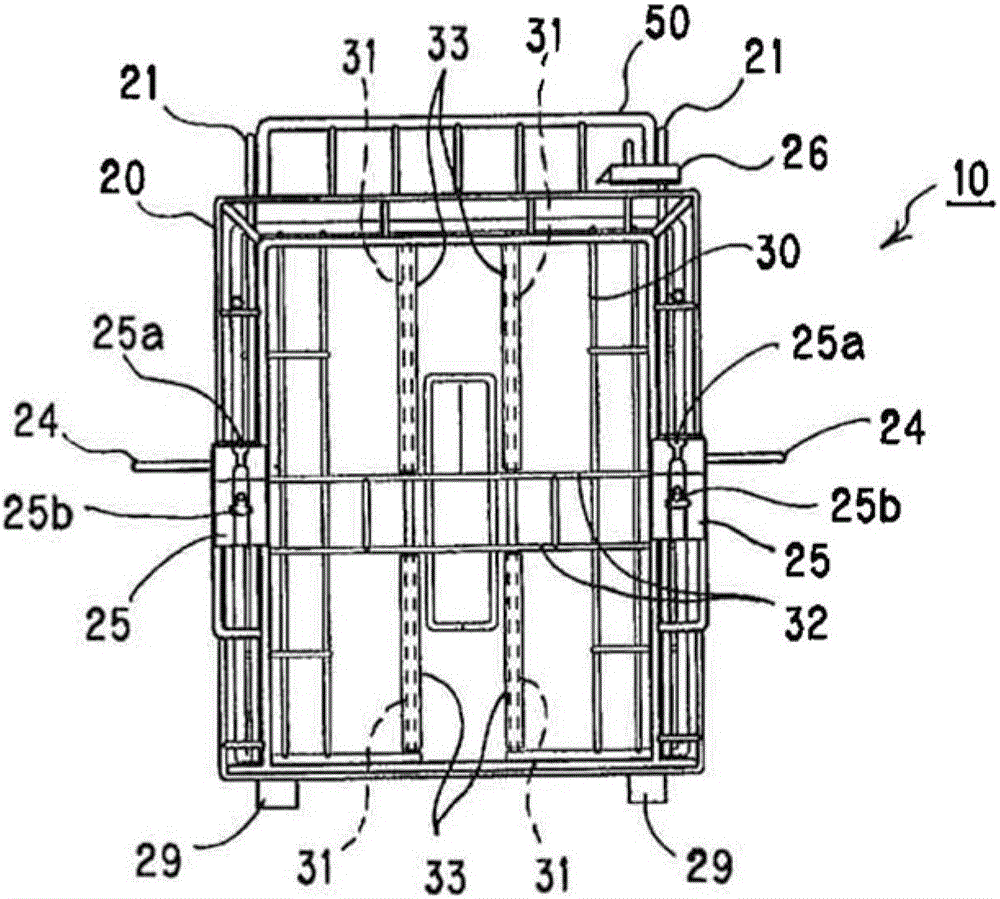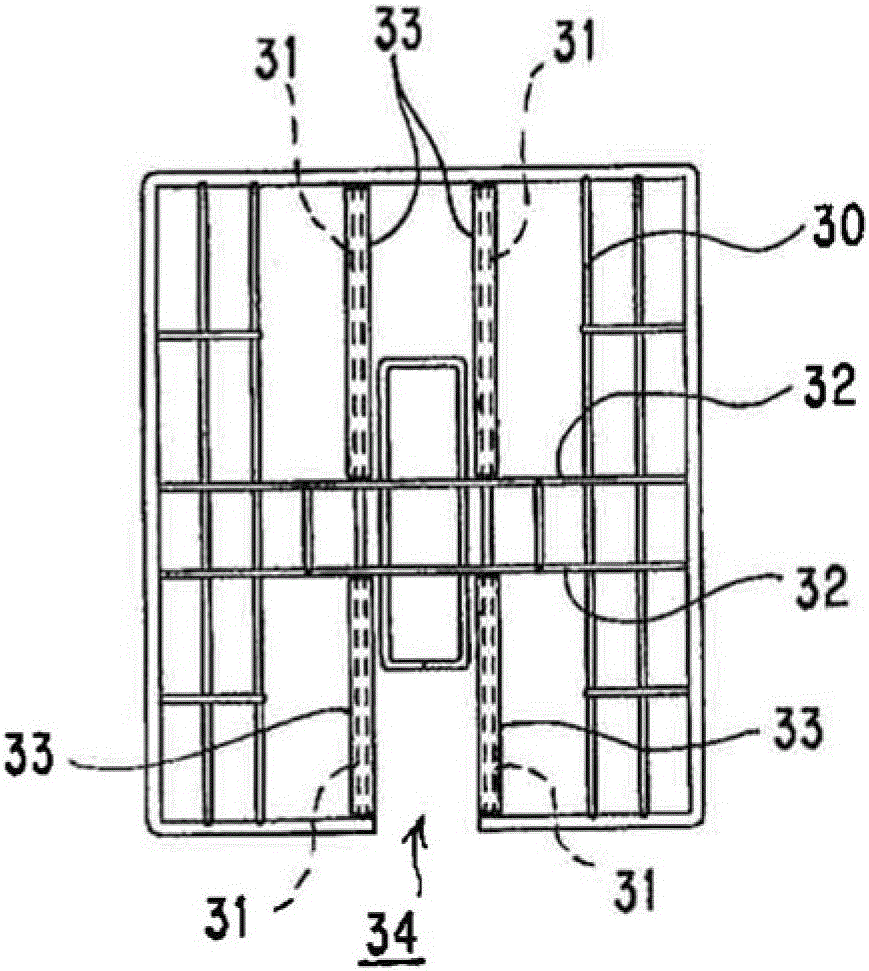primate restraint
A primate and restraint technology, applied in the field of restraints, can solve the problems of skin erosion, peeling, damage to monkey health, etc., and achieve the effect of preventing and eliminating damage
- Summary
- Abstract
- Description
- Claims
- Application Information
AI Technical Summary
Problems solved by technology
Method used
Image
Examples
Embodiment Construction
[0052] refer to Figure 1 to Figure 5 One embodiment of the present invention will be described.
[0053] (Binder 10)
[0054] Such as image 3 As shown, the restraint device 10 of the present embodiment is composed mainly of the storage body 20 , the rear door 50 , and the partition wall 30 . Such as figure 1 and figure 2 As shown, the restraint device 10 of this embodiment forms a box-shaped cage by the storage body 20 , the back door 50 , and the partition wall 30 .
[0055] (storage body 20 and rear door 50)
[0056] Such as figure 1 As shown, the storage body 20 is formed by assembling round rod-shaped stainless steel materials into a grid shape and forming wall surfaces to form side surfaces, a top surface, and a bottom surface. And, the front and back are open.
[0057] Such as Figure 4 As shown, a rear door 5 that can open and close the rear side of the storage body 20 by sliding up and down is provided on the rear side. The upper end of the rear door 50 is...
PUM
 Login to View More
Login to View More Abstract
Description
Claims
Application Information
 Login to View More
Login to View More - R&D
- Intellectual Property
- Life Sciences
- Materials
- Tech Scout
- Unparalleled Data Quality
- Higher Quality Content
- 60% Fewer Hallucinations
Browse by: Latest US Patents, China's latest patents, Technical Efficacy Thesaurus, Application Domain, Technology Topic, Popular Technical Reports.
© 2025 PatSnap. All rights reserved.Legal|Privacy policy|Modern Slavery Act Transparency Statement|Sitemap|About US| Contact US: help@patsnap.com



